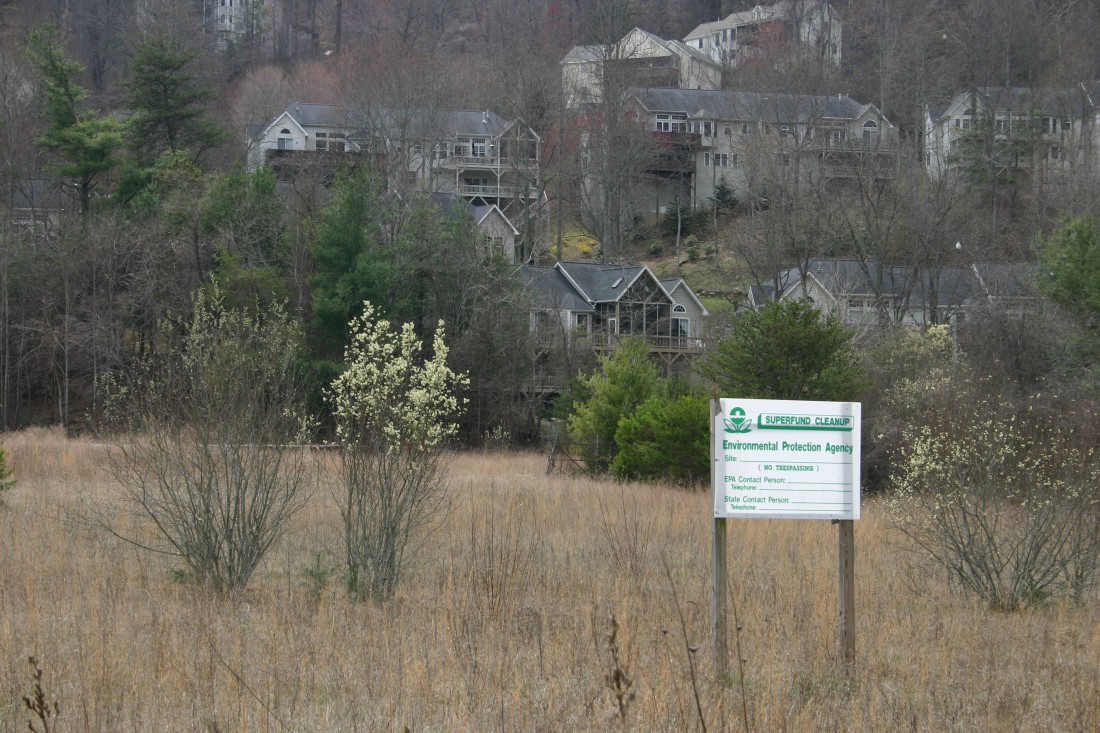On Monday, May 16, the United States Environmental Protection Agency announced the issuance of Special Notice Letters to three Potentially Responsible Parties in regards to the CTS of Asheville Superfund site on Mills Gap Road in Southern Buncombe County.
The letters, says Angela Miller, Public Affairs Specialist for EPA’s Region 4 Superfund Division, are an important first step in the legal process requesting that the PRPS — identified as Mills Gap Road Associates, CTS Corporation and Northop Grumman Systems Corporation — preform the remedial work laid out under the EPA’s Interim Remedial Action for the CTS of Asheville Superfund Site, which the agency finalized in February 11, 2016.
From May 10, when the letters were sent, the PRPS have 120 days to negotiate with EPA over the Remedial Design/Remedial Action moving forward, says Davina Marraccini, Public Affairs Specialist for EPA Region 4. Marraccini adds that EPA expects to have a final settlement agreement in place and to begin remediation work by the end of 2016.
The CTS of Asheville site was added to the EPA’s National Priority List in 2012, though evidence of contamination present in and around the site goes back to 1990, four years after the CTS Corporation ceased activities on the property. In 1998, 47 acres of the property were sold to Biltmore Group, a Limited Liability Company which developed the Southside Village subdivision on former CTS property west of the current 10 acre Superfund site.
Northop Grumman Systems Corporation, meanwhile, owned and operated on the site prior to the CTS Corporation. Mills Gap Road Associates purchased the property from CTS in 1987.
Xpress first covered the issue of contamination and the development of Southside Village in 2007 (See “Fail-Safe?“, July 11, 2007, Xpress). While the EPA is not at liberty to disclose evidence or negotiation strategies regarding ongoing enforcement efforts pertaining to Superfund sites, according to Marraccini, she notes that “In general, liable parties under the Superfund law include current owners and operators at a site, former owners and operators at the site at the time of disposal of hazardous substances, parties who arranged for the disposal of hazardous substances, and certain transporters of hazardous substances to the site.”
Large concentrations of TCE, a known human carcinogen, have been found in ground and surface water as well as ambient air samples in and around the for CTS site for decades. However, efforts to address the source contamination have been slow-going, and community unrest over a lack of transparency and a lack of progress in cleaning the contaminants has boiled over frequently as evidence of the scope and extent of contamination leeching from the property has come to light over the past 10 years.
For more information regarding the CTS of Asheville Superfund site, past and current cleanup efforts, visit cumulis.epa.gov. For more CTS coverage, check out mountainx.com/tag/ctsofasheville. For information on the EPA’s issuance of Special Notice Letters, see the press release below.
Press release:
We are pleased to announce that on May 10, 2016, the U.S. Environmental Protection Agency issued Special Notice Letters to three Potentially Responsible Parties (PRPs) at the CTS of Asheville, Inc. Superfund Site: Mills Gap Road Associates; CTS Corporation; and Northop Grumman Systems Corporation.
Issuing Special Notice Letters is an important first step in the legal process by which the EPA formally requests that PRPs perform remedial work at a site under EPA oversight and according to EPA-approved work plans. The Interim Remedial Action for the CTS of Asheville, Inc. Superfund Site was selected by the EPA in a Record of Decision (ROD) finalized on February 11, 2016.
The Interim Remedial Action calls for a combination of Electrical Resistance Heating (ERH) and In-Situ Chemical Oxidation (ISCO) treatment to address Non-Aqueous Phase Liquid (NAPL) and trichloroethene (TCE) beneath 3.1 acres of the former CTS facility. The estimated cost of this interim source control remedy is approximately $9 Million.
Negotiations between EPA and the PRPs are governed by Section 122(e) of the Comprehensive Environmental Response, Compensation and Liability Act (CERCLA) and will take several months. The EPA is working towards a final settlement agreement and remediation path forward by the end of 2016.




Is anyone looking at vapor intrusion into the homes? These articles (this one and the 2007 that is linked in this one) talk about drinking groundwater and playing in or drinking stream water. TCE is volatile – clearly, since they can remove it by vapor extraction – and if there is a groundwater plume there is a soil vapor problem. The levels observed in groundwater are not only orders of magnitude above drinking water standards, but also orders of magnitude above groundwater-to-indoor air standards. Yet there is no mention of anyone testing soil vapor around the homes, subslab vapor under them, or indoor air. Perhaps it has been established that the groundwater plume is not under the houses. Either way this should be addressed in your stories.
Hi Chris,
Thanks for weighing in and bringing up this important aspect! Vapor intrusion is indeed a serious aspect of dealing with TCE contamination, and certainly must be mentioned in the discussion. Stay tuned for next week’s print edition of Xpress….